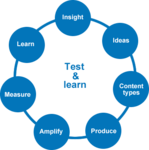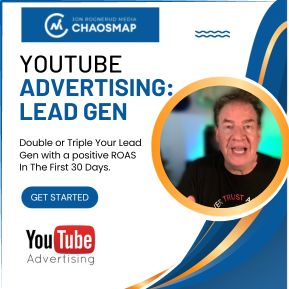Several years ago we worked with an e-commerce client to scale up their web chat system for customer service and sales.
They provided online chat support for clients like MGM, Nokia, Microsoft and several other big brands.
The chat platform we helped build was a competitor to Liveperson, a messenger platform that also has come a long way since then. While our partner technology was innovative 7-8 years ago, times have changed – and as we fast forward to today, it’s pretty clear that web-chat is history.
However, the idea of direct to consumer chat, or direct to business customer messaging, in specific, is on the rise.
Companies like T-Mobile are embracing the instant messenger trend.
Here’s what T-Mobile Marketing said about embracing customer care and messaging together:
“We’ve taken the messaging approach to heart when interacting with our customers as well – we know it’s not just how they talk to each other, it’s how they want to talk to us. That’s why we were the first US wireless company to introduce asynchronous messaging for customer care. This isn’t some “rep chat” window you get on the web”.
They continued, “…our T-Mobile app has a persistent chat experience with Care reps, so you can get help anywhere you want – on the platforms you already use today. And, we were the first wireless company in North America to launch commerce over Facebook Messaging, so customers can interact with reps and buy directly from the Facebook platform.”
Testing, learning & tracking
 With the ability to easily track massive amounts of data points captured from testing and learning within marketing and advertising campaigns (e.g. Facebook Ads for Messenger), the output of data – when analyzed properly – provides intelligent statistics that can be used to improve performance.
With the ability to easily track massive amounts of data points captured from testing and learning within marketing and advertising campaigns (e.g. Facebook Ads for Messenger), the output of data – when analyzed properly – provides intelligent statistics that can be used to improve performance.
That means smarter scaling strategies of campaigns that meet established KPI’s. Dissecting the demographics is part of the data intelligence gathering so you can get to the core of the audience that you then can serve in an improved manner.
Ongoing testing of audiences and creatives is an important exercise for campaign flights, while reviewing and analyzing data in 3, 7, 14 and 30 day increments.
Additionally, leveraging pixel technology and custom scripts from various platforms (e.g. Facebook, Google, Twitter, LinkedIn, Yahoo) and placing them on websites and pages you own, helps to build up “warm” custom audiences.
These valuable customer data sets can and should be further tested and segmented through retargeting (Facebook ads) and remarketing (Google ads, YouTube ads).
Cold traffic (brand new visitors) vs. warm (custom audiences that know you already) or hot (CRM lists, buyer data) will allow you to focus money and resources in the most essential areas.
What messages to use?
Creating messages (copy), ad creatives (images, videos) and a workflow blueprint (user engagement patterns) for the chatbot is a great starting point.
For example… is “welcome message 1” better than “welcome message 2, 3, 4”?
Interestingly – though users may feel that a non-human chat-bot is not optimal, the technology is powered by humans and creative work behind it, and your messaging ought to reflect that. Tell them in your messaging what to expect, and that “Paul or Susan, the chat-bot” is there to help them, faster, better, smarter.
This will make the chat-bot seem more human. Tonality definitely matters. Use “A/B” testing practices through the use of smart experiments to help you understand better how to move forward and when.
“Because messaging is so new, keeping an open mind and letting data accrue and then making non-emotional decisions on messaging strategies is key”, says Jon Rognerud, Founder of Chaosmap.com
Big results and changes
 For a recent 8-figure client, we tested different messages in a chat-bot sequence and found that “yes/no” questions provided much better engagement than an “open-ended” type of question. We found this out through testing and learning.
For a recent 8-figure client, we tested different messages in a chat-bot sequence and found that “yes/no” questions provided much better engagement than an “open-ended” type of question. We found this out through testing and learning.
The end result? Over the first 2 weeks, we raised conversion rates for big ticket event sales by over 52% from this simple change!
When reviewing your analytics, gaps in data and variances comparison will help you navigate and optimize campaigns as you build a performance-driven, scalable solutions for yourself and clients, as we do.
Gartner Research indicated that 25% of customer service and support operations will integrate virtual customer assistant (VCA) or chatbot technology across engagement channels by 2020, up from less than two percent in 2017. This is a fast rise on a technology an advertising platform that is in many ways under-used today.
Meeting people where they are (online) is essential in today’s environment.
And, with email open rates declining and messaging engagement easily beating email, it is prudent and useful for any business, big or small – to test and learn from Facebook Messenger ad solutions.
Email open rates dropping
According to the E-mail Marketing Metrics Benchmark Study, the world average open rate of emails was 21.8%. This means that almost 78% of users are not interested in opening emails sent by brands. The reasons may be different, but one of the main reasons is related the high number of unwanted messages that users receive daily to their email accounts.
Intent-based branding marketing combined with technologies like FB messenger, chat-bots to leverage better customer service and more sales can yield solid improvements in your company’s bottom line sales.
Testing messenger platforms on Facebook can allow an easier way to penetrate a market without making substantial changes to website UX designs, which is an added benefit.
Jon Rognerud and Chaosmap work with Fortune 500 companies, associations and entrepreneurs to create digital traffic strategies that scale up members, customers, leads and sales with profitable returns. Mr. Rognerud wrote a best-selling book (Buy On Amazon), “The Ultimate Guide To Optimizing Your Website” (Entrepreneur). Connect directly here.







